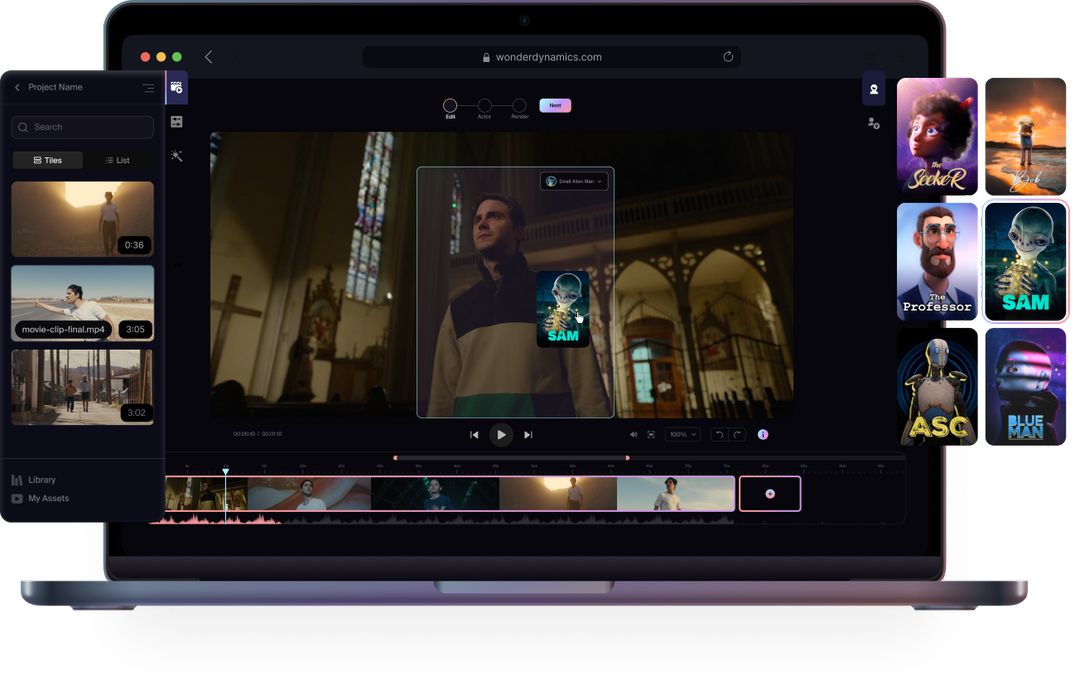
Autodesk acquired AI-powered Wonder Dynamics, suggesting they may be on the prowl for additional AI acquisitions.
Autodesk produces a range of commercial and free-to-use 3D tools for a variety of industries and applications. In our 3D print space, the most popular tools are Autodesk Fusion 360 and the web-based Tinkercad.
Wonder Dynamics is a startup company that developed a fascinating tool, Wonder Studio, to generate visual effects. It’s actually quite amazing, and here’s how it works: you film an actor in motion. Then in Wonder Studio you drag a 3D character design onto the actor — and it replaces the actor with the character. The replacement maps all the motions to the character, including facial expressions. This would have been totally impossible years ago, but now gives incredible power to those with only a camera and a 3D model.
No doubt Autodesk will either incorporate this technology into their existing visual 3D products, or perhaps launch a separate product based on Wonder Dynamics tech.
While quite interesting, Wonder Dynamics technology has little to do with 3D printing: the technology is for creating visual assets, not solid 3D models that can be 3D printed.
However, there is an implication of this acquisition.
It demonstrates that Autodesk is fully onboard with acquiring AI startups, assuming they have useful technology.
With regards to 3D printing, there are quite a number of startup companies working on the “Text to 3D” problem. This is the process of transforming a text prompt into a usable 3D model.
I’ve tested a number of these tools and found most of them pretty rudimentary at this stage. However, it is still quite amazing that any 3D model can be produced in this way. Nevertheless, the 3D models are barely usable and there is much work to do.
Given the incredibly rapid pace of AI tool development, it’s reasonable to predict that these Text to 3D startups will sooner or later come up with tools that can actually do the job. Most likely the first usable tool will offer the ability to generate organic shapes, while more advanced tools later will generate dimensionally precise part designs.
It may be that Autodesk is keeping close watch on the Text to 3D startups, and awaits success from one or more of them. It’s entirely possible they may then acquire a startup in this area, and subsequently incorporate their tech into Autodesk products.
Autodesk’s competitors may also have similar strategies, and this is why we may see acquisitions sooner than later: you don’t want to let the “other guy” pick up the company before you do.
Via TechCrunch, Wonder Dynamics and Autodesk
